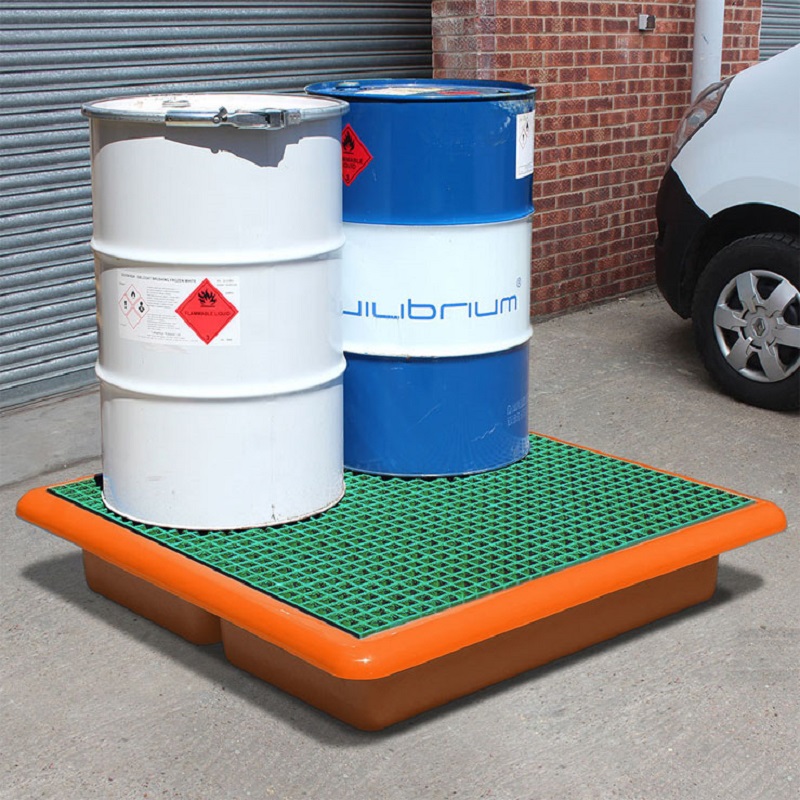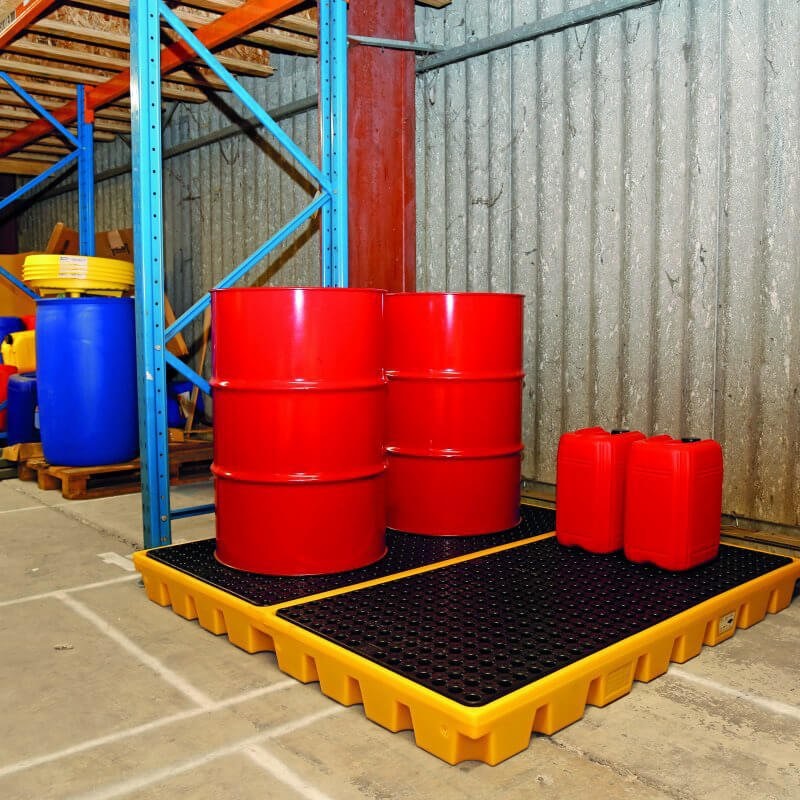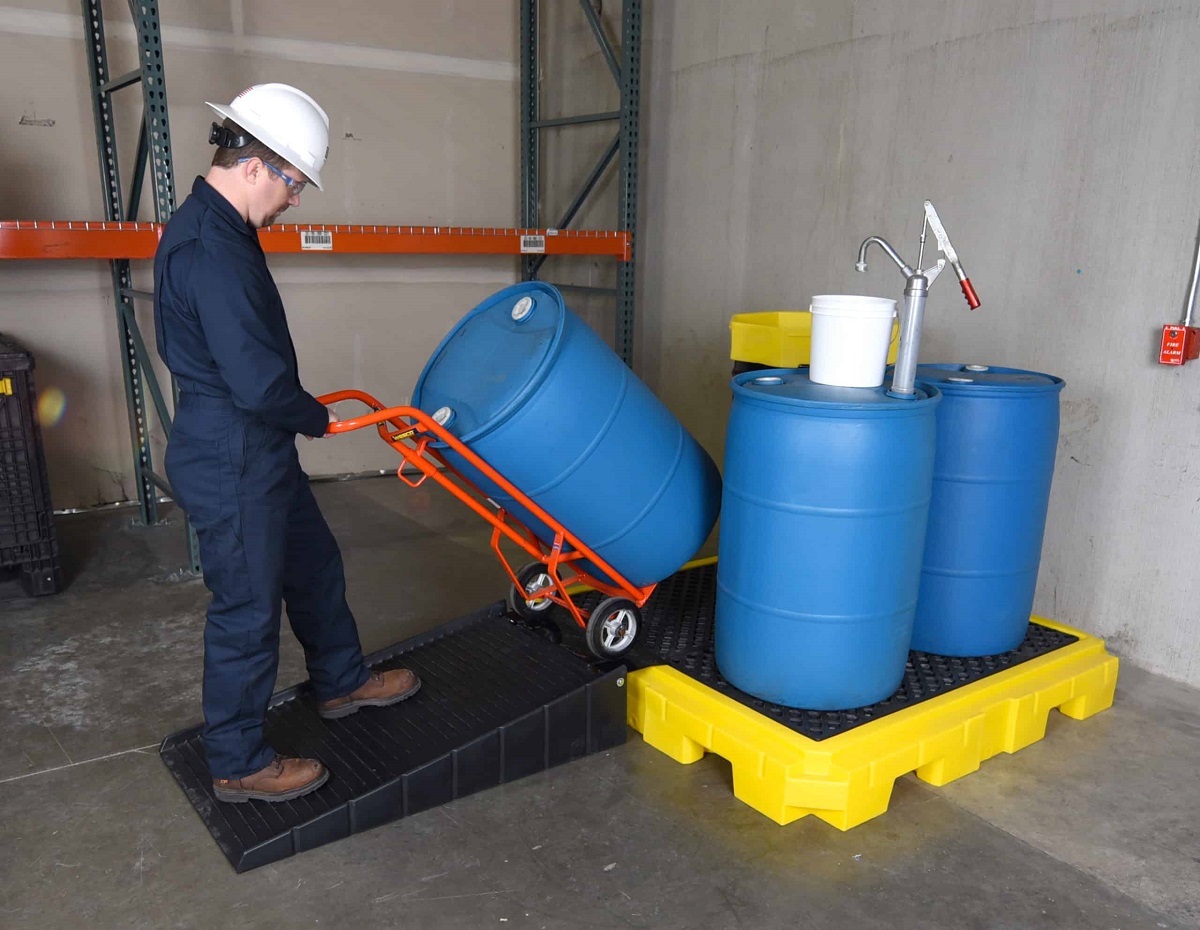In managing hazards related to chemical spills, you need to use bunding; it’s a must-have as part of the secondary containment strategy. In other words, a spill bund is a form of a wall that will prevent dangerous liquids from spilling from barrels.
If you’re running a warehouse or a worksite where there is a danger of spilling hazardous liquids that can severely harm people, animals and the environment, you need to get oil barrel bunds.
Drum bunds work as a secondary solution that will trap spills and leaks; and in case such leaking happens, the bund will keep it inside, preventing it from escaping the barrel. If you’re looking to buy bunds, here are the most important things to know.
What is Bunding?

Bunding is a secondary containment solution that captures spills and leaks from a containment system, like a drum. It caught any liquid that flees the main containment system, and prevents it from spilling into the workplace. Bunding is made of an impervious floor and walls that create a watertight area around the primary storage containers.
Type of Bundings to Get

The type of bunding to get for your workplace is connected to various factors including the type of liquids you use (if it’s for oil, then choose oil barrel bunds), how much liquid is on-site, if the site needs a portable bunding, and the time you’ll have liquids in storage. Be sure to consider your work environment and the risk that any spills or leaks might have on the environment, people and animals in and around your worksite. Before taking or storing any hazardous liquids on site, it is important that you complete a detailed risk assessment and that you do all of your due diligence to confirm you’re meeting Australian WHS regulations.
Bunding is classified in a few ways – by material, shape, mobility and flexibility. So, there are buildings made of concrete, PVC, and brick, that are ramp, square, and hump which can be portable or stationer, rigid or flexible. When choosing the right choice for your facilities, you should consider the application, which will determine the general design and the type of spill bunding.
Portable Bunding
Portable bindings are mobile and are ideal for temporary storage at remote locations that are away from the main facilities. These are usually used for mining, oil, gas and other extraction industries and during different other field functions within the construction sector.
Portable bunds are often made out of heavy-duty PVC, with extra reinforced strips for improved stability and easy installation. They are quick to install and easy to pull down and fold away and need minimum storage space when not in use
Bunded Spill Pallets
As the name says, bunded spill pallets are durable, impervious and resistant; they keep potential spills coming from the drums. They work as holding utensils for liquid-containing barrels and drums. Bunded palettes are a universal and popular type of bunding with a wide range of uses, in drum storage areas.
Choose them if you need compact and lightweight bunded palettes. You can easily stack or nest them when they aren’t in use. They come in 2 or 4 drum configurations with IBC and twin IBC.
Rubber Floor Bunding
The rubber floor bunds are a classic type of stationary bunding, great for various applications where heavy vehicles are needed to enter the bund, such as transfer areas, wash bays, warehouses and storage areas.
Rubber floor bunding s one of the most durable types of bunding, made to resist heavy traffic and treatment over a long time. It features contoured edges that will let smooth vehicle entry and departure and lower trip hazards for your employees.
Flexible Floor Bunding
These are made of a durable but flexible material that permits vehicles to pass over it to (move the drums). The material smoothly curves under the vehicle wheels and springs back into shape once the vehicle passes; it isn’t uncomfortable bouncing and the need to get out and lower the wall to gain entry.
This type of bunding is excellent for facilities where forklifts or other machinery. They’re available in 75mm and 100mm when the volume need of the bund needs to be a little more.
Regulations For Spills and Dangers

Regarding the containment and management of chemical spills in the workplace, Australian businesses are required by law to comply with WHS Regulations. The WHS Regulation states that:
- Subdivision 2 Spills and Damage
- 357 Containing and Managing Spills
A person running a business or undertaking at a workplace must provide, so far as is reasonably possible, that where there is a risk from a spill or leak of a hazardous chemical in a solid or liquid form, provision is made in each part of the workplace where the hazardous chemical is used, handled, generated or stored for a spill containment system that contains within the workplace any part of the hazardous chemical that spills or leaks, and any resulting effluent. The WHS Regulations state that provision must be completed in workplaces to ensure that a spill containment system is utilised where there is a risk of a spill or leak of a hazardous chemical.
